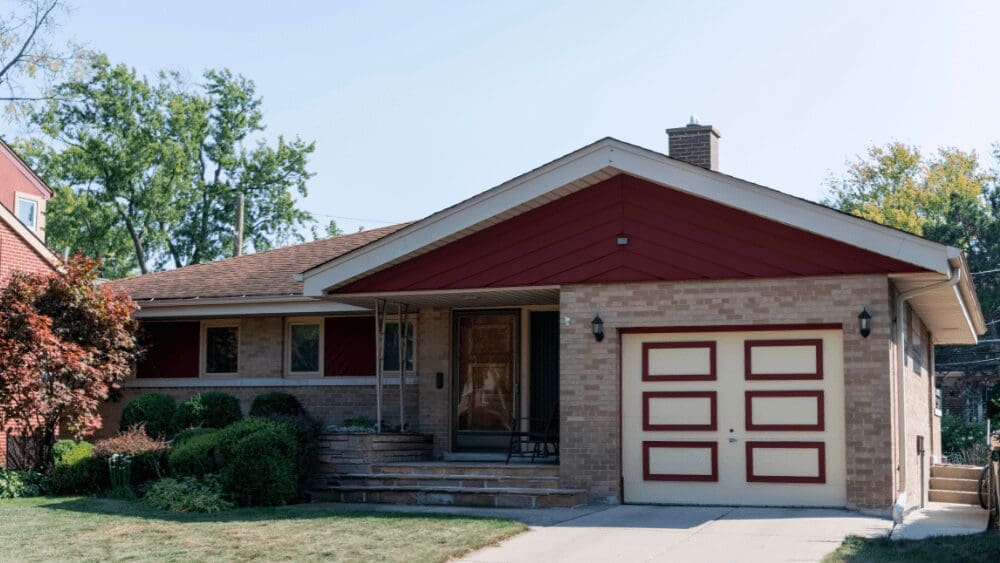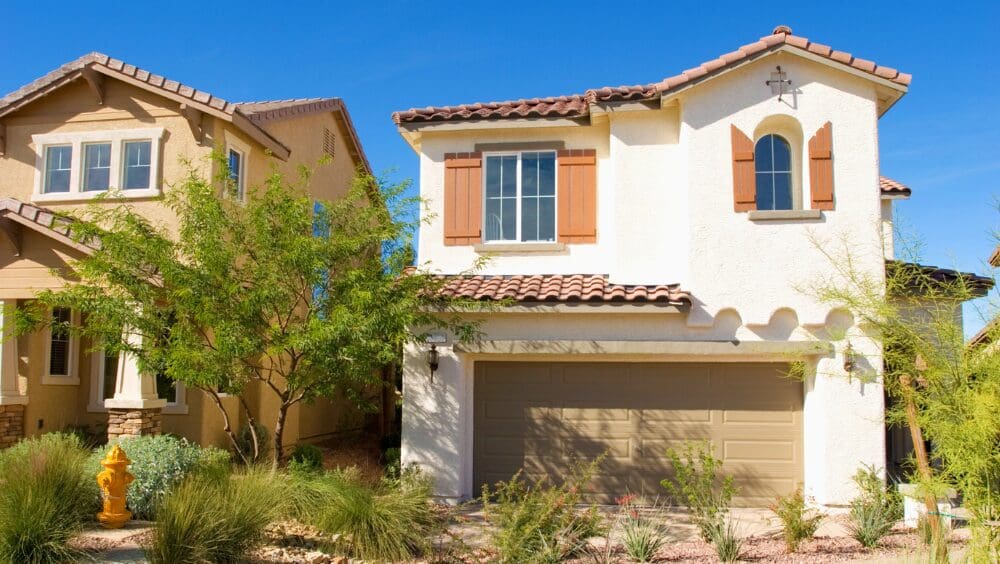
Americans spend an average $7,560 on home improvements, $1,105 on home maintenance, and $416 on home emergency spending per year, according to HomeAdvisor’s 2019 State of Home Spending Report. To a homeowner, that’s $9,801 out of pocket (ouch!). To Uncle Sam, that’s a tax riddle. Here’s why: The IRS distinguishes between routine repairs and capital improvements, and only the latter will help you save on any taxes owed on the sale of your primary residence. To add to the immense fun of doing your taxes, neither type of home-related expense will usually qualify as a direct write-off. You need to know how capital gains work and run a specific calculation for capital improvements to matter. With this guide featuring a quiz at the end to test your knowledge, we’ll settle a heated debate and source of confusion: What is considered a capital improvement on a home, and how does it factor into that stack of papers you’ll need to file by April 15? Are you even a homeowner if you haven’t paid to fix a plumbing leak, hole in the roof, broken water heater, or chipped paint? No doubt, one or more of these standard home repairs have caused you to pull out your pocketbook before. Unfortunately, these one-off fixes won’t usually translate to tax savings. According to Brett Wasserman, a partner at the legal offices of Marc Bronstein in Santa Monica, California, who handles tax and real estate law, you can’t deduct the cost of home repairs on a personal residence unless you’re using the repaired portion as a home office. You can only deduct the cost of repairs if you own rental or business property. In that case, those expenses reduce your business income — and your tax burden — for the year that you deduct them. The IRS has specific requirements for property investors and repair deductions outlined in section 162. To qualify for these write-offs, your business must have average annual gross receipts of $10 million or less, and you also must own or lease building property with an unadjusted basis of less than $1 million. In addition, the total amount paid during the taxable year for repairs, maintenance, improvements, or similar activities cannot exceed the lesser of either 2% of the adjusted basis of the eligible building property, or $10,000, according to the IRS. These repairs also have to “keep the property in its ordinarily efficient operating condition.” When in doubt, think of capital improvements as any work that enhances the value of your home. We’re talking about intentional, forward-looking projects that could help prevent costly repairs in the future and prolong your home’s life. If you modernize your kitchen, revamp the bathroom, or put in new carpet wall-to-wall, the IRS will likely classify those expenses as capital improvements. The same applies if you redo your pipes and ductwork, put in gorgeous new hardwood, or beautify your curb appeal with landscaping. These projects differ from repairs in that they are investments rather than a reaction to something that breaks. However, even if a house project classifies as a capital improvement, you can’t deduct the cost from your taxable income like a typical write-off. Instead, capital improvements modify your home’s cost basis, aka what the government thinks of as the amount you paid for the house originally. A higher cost basis can decrease the amount you owe in capital gains taxes when the time comes to sell your home. Let’s run through an example to explain. When you sell any capital asset, including real estate, the government says: “Hey, I may want a slice of that profit!” However, Uncle Sam wants to encourage homeownership and make buying a home an attractive investment. So when it comes to selling your primary home where you live most of the time, the IRS gives Americans a lot of wiggle room to make a tax-free profit. To sum the capital gains rule: If you’re selling your primary home — and you’ve lived in it and owned it for at least two of the past five years — you can exclude up to $250,000 of profit on the sale when filing taxes as an individual. Taxpayers who file a joint return with a spouse can exclude up to $500,000 of that gain. In either case, if your gain doesn’t exceed the maximum limit, you do not need to report the home sale on your tax return. Now, back to capital improvements. Any project that adds to your home’s value can help you make sure you don’t go over that $250,000 or $500,000 cap. Here’s how: Let’s say you originally bought a single-family home for $200,000. You install siding that costs $10,000, a capital improvement that brings your home’s cost basis to $210,000. Years later, you and your spouse sell the home for $750,000. Without including the siding to raise your home’s cost basis, you and your spouse owe capital gains taxes on $50,000 (or $750,000 – $200,000) because you went over the $500,000 exclusion limit by $50,000. But with a cost basis of $210,000 that factors in the siding investment, only $40,000 of your gain would be taxable. n this case, the capital improvement of adding new siding reduced what the government considers taxable profit. If you accounted for additional capital improvements, such as the $1,500 you spent on new carpets or your $7,000 bathroom update, your taxable gain would go down even more as you increased the cost basis by those respective amounts. If you’ve owned the property for more than a year, your capital gains tax rate will be 0%, 15%, or 20% depending on your income bracket on whatever amount exceeds the government’s exclusion cap. The difference between a capital improvement and a repair sounds clear in theory but can get complicated in practice. Imagine a one-off repair turns into a full-fledged renovation. Which part of that expense counts as a capital improvement? Some? All? None? To navigate this gray area, the IRS uses a “facts and circumstances analysis” to determine whether a project is considered a capital improvement. “The IRS is always going to be looking at the situation as a whole,” Wasserman explains. “It depends on the specific facts in that circumstance.” The IRS will promote a repair to a capital improvement in three ways, each of which must provide “a permanent improvement on the value or the life of the property,” Wasserman says. These include: Not sure where your project lies? “The higher the value, the harder it is to characterize it as a repair instead of an improvement,” Wasserman says. Let’s look at a hole in the roof. Simply patching or fixing the damaged portion is a repair. “But if you redid the entire roof because of that hole and you put in solar panels, that would be a capital improvement,” Wasserman adds. We consulted our tax expert and pored over H&R Block’s tax resources to bring you this (dare-we-say fun) little capital improvements quiz. If you think you’ve got the information locked in by now, it’s time to put your knowledge to the test. You’ve read about the trendiest exterior paint colors for 2020 and believe that Benjamin Moore’s Barren Plain (a warm gray) will help you sell your home, as opposed to the light blue that always looked a little off with your home’s masonry. Answer: Painting inside or out is a repair. Although your real estate agent might recommend painting to neutralize the home or improve curb appeal, paint keeps your home operating efficiently. It doesn’t add value or prolong the life of your home. You’ve already gutted the space and upgraded to a new electrical panel for an HDTV and cozy family room down there. Why not add on the HVAC? Answer: That’s a capital improvement. If you’d called an HVAC technician to fix a particular problem, that’s a repair. But replacing the appliance increases the value or life of your property, Wasserman says. A recent storm whipped a huge oak branch right through your front window, scattering glass all over the rug. What a mess. Answer: If you’d noticed a crack without explanation in the window after years of use, that would constitute a repair from ordinary wear and tear, Wasserman says. But storm damage inside and out makes this a capital improvement. You’re restoring the property to its previous state after a casualty loss. You and your neighbor have finally sorted out where your property lines are. You decide to put in that privacy fence you’ve been eying so you can entertain. Answer: That’s a capital improvement, much like paving your driveway or installing new plumbing. In your neighborhood, stucco is hugely popular. Why keep refreshing the paint when whatever color you choose seems to pale in comparison? Answer: That’s a capital improvement. Even if you add stucco only to the front of the house and paint the sides, stucco lasts longer, extending the property’s life and value, Wasserman says. As you can tell, capital improvements and repairs are competing notions. “Little factors here or there can tip the scale one way or the other,” Wasserman says. “Where is that line where I’m restoring it to its ‘original state,’ or doing an improvement? Are you repairing a particular wall, or are you tearing down a wall because you want a two-bedroom instead of a three-bedroom?” When you retile the shower, fix up the broken HVAC, or stop a plumbing leak, you need to know what’s relevant come tax season. However, tax savings won’t be the only factor to consider in your decisions to renovate or make repairs. Joshua Hagan, a real estate agent serving the Bentonville, Arkansas, area, says most home sales in his area fall well below the $500,000 capital gains profit threshold for a couple filing jointly. So instead of focusing on improvements for tax reasons, he discusses what fixes a house needs to sell fast, such as a new roof to repair damage from hailstorms. “Yes, it hurts to spend that, but you’re going to have to spend that whether this buyer buys the house or not,” he says. Real estate agents like Eric Forney, a listing specialist in Indianapolis, Indiana, always ask sellers about significant renovations and repairs, as well as the ages of their home’s major components and appliances. That way, he has this information for buyers and can guide sellers toward any possible tax savings. For instance, a Residential Energy Property Credit allows taxpayers to claim a credit for 10% of energy-efficiency improvements such as insulation, exterior windows, and certain roofing products, or up to $500 for expenditures such as energy-efficient heating and air conditioning systems. Forney will also advocate for improvements that have a good return on investment (ROI), such as contiguous flooring. “If there’s hardwood that jumps back to tile, or three different types of flooring in a visual periphery, we usually advocate for the seller to unify that flooring to make the space feel more cohesive,” Forney says. Showing that your home is move-in ready helps attract multiple offers, and as long as you’ve partnered with an agent whose vendors get volume-based pricing, “the seller typically comes out ahead,” he adds. Still fuzzy on whether a project on your mind is a capital improvement or a repair? Tell your real estate agent or a tax professional what you’re considering. Even if your project doesn’t count as a capital improvement, it might be worth doing to preserve your property value and keep the house in great shape for whenever you’re ready to sell. Disclaimer: Information in this blog post is meant to be used as a helpful guide, not legal advice. If you have a tax question regarding your home or the sale of residential property, please consult a skilled tax professional.Run-of-the-mill repairs don’t count
Capital improvements must add value
Goodbye capital gains
When repairs become improvements: A gray area
Quiz time! Capital improvement or repair?
Project #1: You makeover your home exterior with a fresh coat of paint.
Project #2: You replace the HVAC as part of a basement remodel.
Project #3: Replacing broken window
Project #4: You install a fence for privacy.
Project #5: Never mind paint. You want stucco.
When capital improvements aren’t everything
Complete necessary repairs for selling
Other tax breaks exist, too
Watch the ROI
When in doubt, ask a pro



